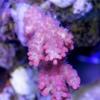-
Topics
-
Latest Update
-
0
Stable frags for sale
Hi Reefers, some encrusted frags for sale! They have been fragged and stable for months. 1) Sunflower zoas - $20 2) Classic red stag - $20 3) bicolor goniopora - $25 4) Pink lash goniopora - $25 5) rainbow purple goniopora - $30 Take all for $110 + free delivery. Whatsapp me at 9one0six 3nine3four. Note that priority is given to those who are taking all. Photos taken with filter lens, straight from camera with no further edit and tank is lit with LED + T5 combi. -
2
-
-
-
-







Recommended Posts
Join the conversation
You can post now and register later. If you have an account, sign in now to post with your account.